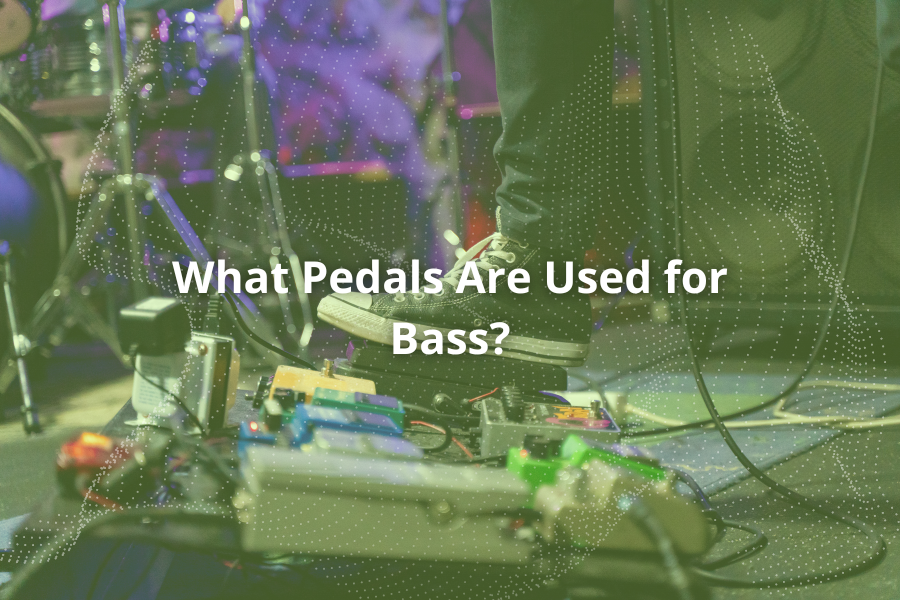Welcome to the low-end spectrum of the music world, where the bass guitar reigns supreme. But even the mightiest of bass tones can be enhanced, shaped, and transformed with the right tools – and that’s where bass effect pedals come into play. Whether you’re just starting to explore the sonic landscape of bass or a seasoned player looking to refine your sound, understanding the world of bass effects is crucial. In this ultimate bass effects guide, the dudes are here to discuss the pedals that bring out the best in your bass. Strap in, and let’s embark on this journey to discover the heart of your bass pedal chain.
Understanding the Bass Pedal Chain
The bass pedal chain is more than just a collection of effects; it’s the architect of your sound. The order in which you place your pedals significantly influences the final sound that emerges from your amplifier. Typically, this chain starts with pedals that shape your raw signal, like tuners and compressors, and ends with those that add ambiance, like reverbs and delays.
But why does this order matter? Imagine your bass signal as a river flowing through a series of dams and channels. Each pedal alters this flow uniquely. Placing a distortion pedal before a compressor, for instance, gives you a more controlled, less aggressive distortion, while reversing this order can lead to a wilder, more dynamic effect. The key is understanding how each pedal in your bass signal chain interacts with the others and how they collectively contribute to your overall tone.
Essential Bass Tone Pedals
Many great bass pedalboards feature a few key bass tone pedals that form the foundation of the bassist’s sound. Here are a few of the staples on a bass player’s pedal chain and solid product recommendations to get you started.
Tuner Pedal
Essential for both live performances and studio sessions, this pedal ensures that your bass is always perfectly in tune.
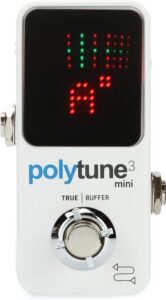
- TC Electronic PolyTune 3 Mini: A compact and highly accurate tuner, suitable for studio and live settings.
- Boss TU-3 Chromatic Tuner: Known for its reliability and precision, it is a staple on many professional bassists’ pedalboards.
Compressor Pedal
This pedal evens out the dynamic range of your playing, ensuring consistency in your sound, from the softest ghost notes to the most aggressive slaps.
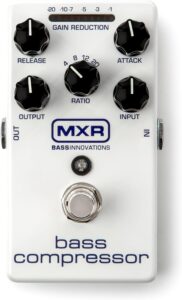
- MXR M87 Bass Compressor: Offers excellent control over dynamics with a transparent sound.
- Aguilar TLC Compressor: Renowned for its smooth compression, perfect for evening out bass tones.
EQ Pedal
Providing precise control over your bass’s tonal balance, the EQ pedal is especially useful in live settings for adjusting your sound to suit the room’s acoustics.
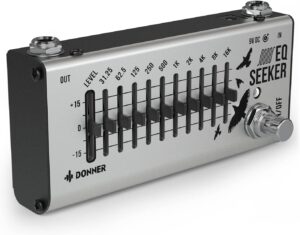
- Donner EQ Pedal: A classic choice for an EQ pedal that provides ten bands of tonal control.
- MXR M108S Ten Band EQ: Offers precise tonal control with ten bands of EQ, ideal for fine-tuning your bass sound in live situations.
Overdrive and Distortion Pedals
These pedals add grit and character to your bass lines, helping them stand out prominently.
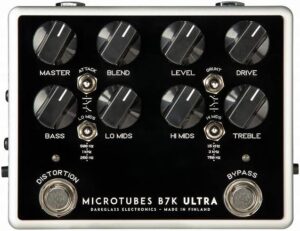
- Darkglass Electronics Microtubes B7K Ultra V2: A high-end option known for its versatile overdrive and distortion sounds.
- Electro-Harmonix Bass Big Muff Pi: Provides classic fuzz tones tailored for bass, perfect for adding character to your sound.
Envelope Filter Pedal
Ideal for bassists looking to explore new sounds, this pedal adds a funky and experimental edge to your tone.
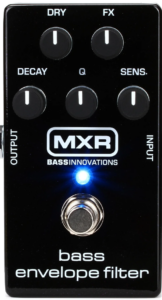
- MXR M82 Bass Envelope Filter: Offers funky and expressive filter effects, great for experimental bass sounds.
- Source Audio Spectrum Intelligent Filter: A versatile pedal with multiple filter types and deep editing options.
Chorus Pedal
Adding a dreamy, sweeping effect, the chorus pedal is great for creating a fuller and more resonant sound.
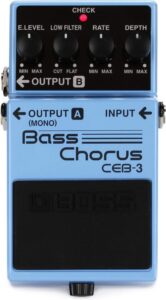
- Boss CEB-3 Bass Chorus: A staple chorus pedal for bassists, known for its rich and warm modulation effects.
- TC Electronic Corona Chorus: Provides lush and versatile chorus sounds with additional tone-shaping options via TonePrint technology.
Expanding Your Sound: Creative and Experimental Bass Pedals
Beyond the basics, let’s explore pedals that allow for more creative and experimental approaches.
Synthesizer Pedal
Transforms your bass into a synth, ideal for creating genre-bending sounds and textures.
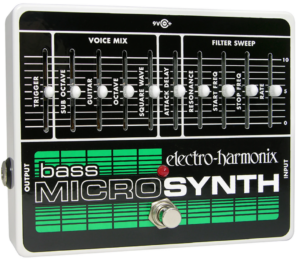
- Electro-Harmonix Bass MicroSynth: Offers a range of synth textures and sounds, providing a platform for creative experimentation.
- Source Audio C4 Synth Pedal: A highly versatile synth pedal that allows for extensive sound shaping and customization.
Octave Pedal
Adds higher or lower octave notes to your playing, enriching your sound with depth and range.
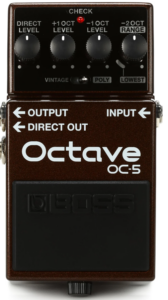
- Boss OC-5 Octave: Known for its precise tracking and dual octave capabilities, it is perfect for expansive bass tones.
- MXR M288 Bass Octave Deluxe: Provides a blend of organic and smooth octave tones, ideal for enhancing your bass sound.
Multi-Effects Unit
It offers a wide array of effects in one unit, serving as a comprehensive toolbox for tonal exploration.
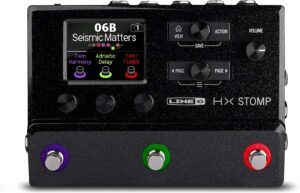
- Line 6 HX Stomp: A compact yet powerful multi-effects unit with various customizable effects and amp models.
- Zoom B3n Bass Multi-Effects Processor: Provides a versatile range of effects and amp simulations, suitable for various playing styles and genres.
Reverb Pedal
A reverb pedal adds a lush, expansive quality to bass lines, perfect for creating ambient and atmospheric sounds.
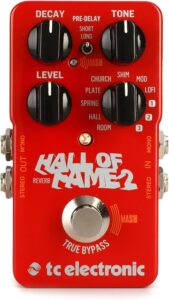
- TC Electronic Hall of Fame 2: Delivers a broad spectrum of high-quality reverb effects, suitable for adding depth and space to your bass playing.
- Electro-Harmonix Oceans 11 Reverb: Features 11 reverb styles, allowing for a broad range of creative ambient textures.
Effect pedals are powerful tools that open up a world of creative possibilities. From the foundational tones shaped by tuners, compressors, and EQ pedals to the character and depth added by overdrive, distortion, and chorus pedals, your pedalboard is a palette for sonic exploration.
Your bass pedal chain is a reflection of your musical identity. It’s about finding the right combination of tools to express your unique voice. The journey doesn’t end with assembling a set of pedals. The true art lies in how you use them to shape your sound, in practice, in the studio, and on stage. What works for one bassist might not for another. It’s all about experimentation, listening, and adjusting until you find that perfect sound that resonates with your style. So, embrace the journey, keep experimenting with different pedals and settings, and most importantly, have fun creating music!


